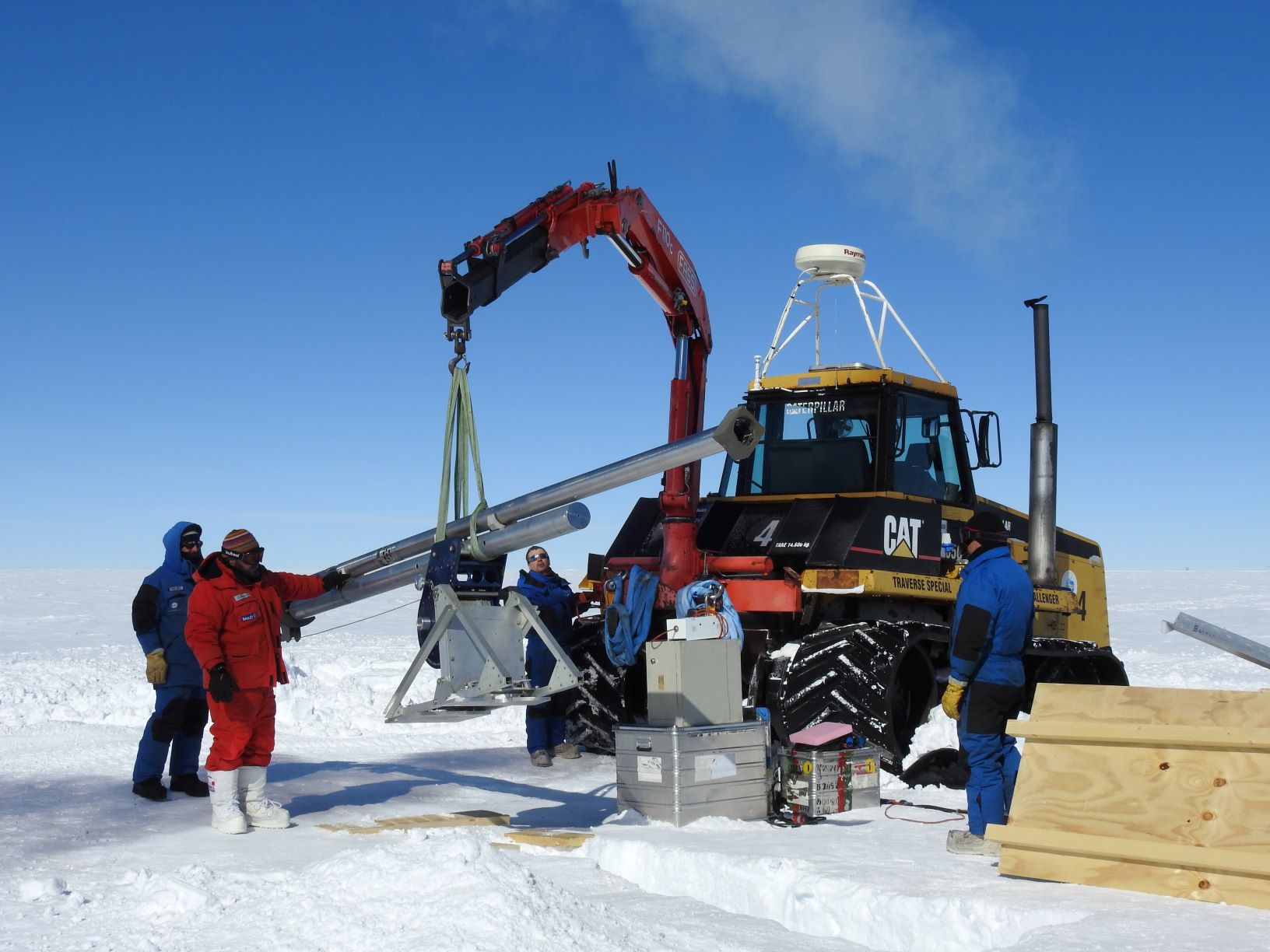Beyond EPICA: Oldest Ice (reconnaissance phase)
BE-OI is a H2020 European project (Coordination and Support Action, IPEV, PNRA and CNRS being official contractants) to locate in Antarctica optimal sites where a deep drilling operation could be conducted during the decade 2020. The aim is to recover a stratigraphically-ordered sequence of climate and atmospheric/environmental conditions going back to 1.5 million years before present, overlapping the so-called mid-Pleistocene transition when the pacing of glacial-interglacial cycles dramatically changed from 40 to 100 kyr periodicities. Ultimately, the main question lies in the role played by greenhouse gases in this major change
On the French and Italian side, the focus reconnaissance work of BE-OI takes place at Concordia and its vicinity. In 2016/2017, the site of “Little Dome C”, located about 40 km west from Concordia along the ridge toward Vostok station, has seen extensive radar survey, a first series of phase radar measurements, GPS positioning as well as a first test drilling with the British RAID rapid access drill. At Concordia itself, the first test campaign of the highly innovative SUBGLACIOR reconnaissance probe was conducted. 2017/2018 will see a second test season for SUBGLACIOR (if logistics permits it), a second deployment of RAID, as well as GPS and phase radar measurements.
The BE-OI component presented here covers the follow-up of the 2018/2019 and 2019/2020 field seasons: the SUBGLACIOR deployment at the optimal site of Little Dome C, a site defined during the field season 2017/2018, as well as additional deformation measurements and the first field deployment of the Swiss rapid access tool RADIX. 2019/2020 will either see a reiteration of the above activities, or the start of camp buildup anticipated for the following deep drilling operation. In addition, tests of new logging tools (notably a sonic logger) in the EPICA borehole are anticipated during these two seasons, before their deployment in the BE-OI reconnaissance boreholes.
The IPEV project BE-OI therefore represents most of the French and Italian declination (+ part of the Swiss contribution) of the European project BE-OI. For the field seasons 2016/2017 and 2017/2018, the latter was incorporated into two projects: SUBGLACIOR-1119 and part of GLACIOLOGIE-CONCORDIA-902. At the request of IPEV and for ease of follow-up by the CPST, the following two field seasons see the merging of these two projects (in part for 902) into a single one, named BE-OI.

